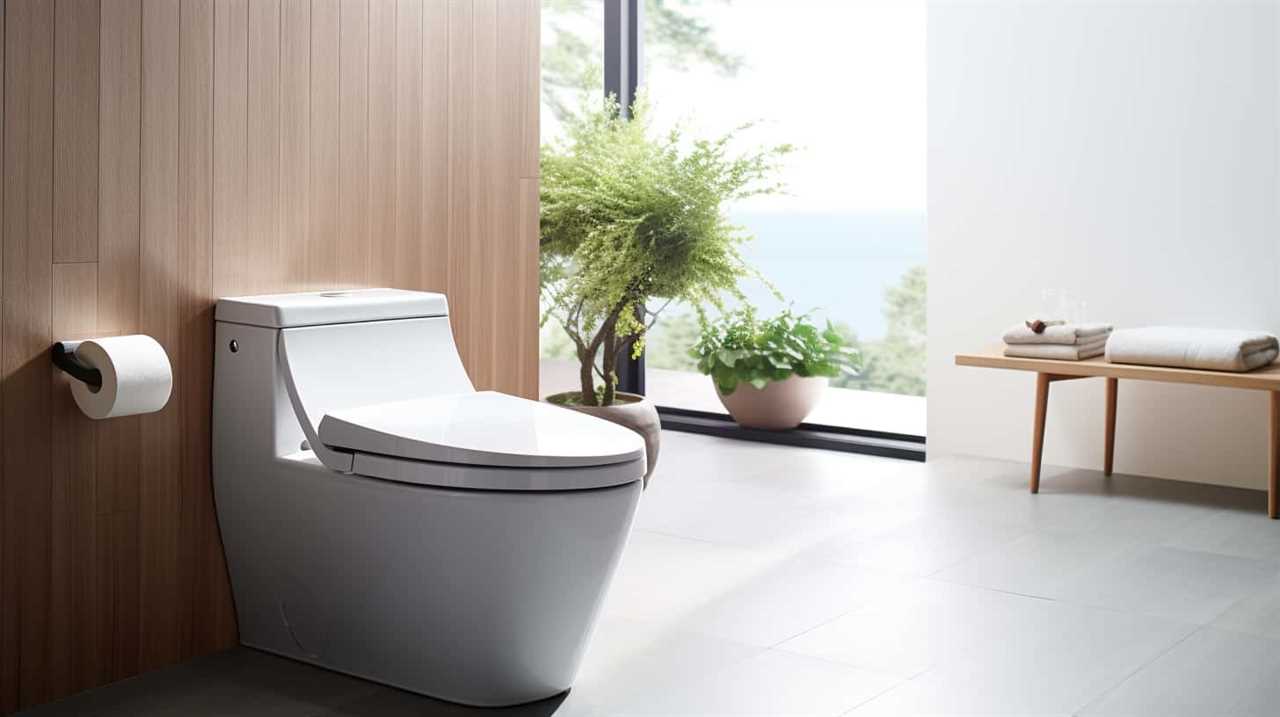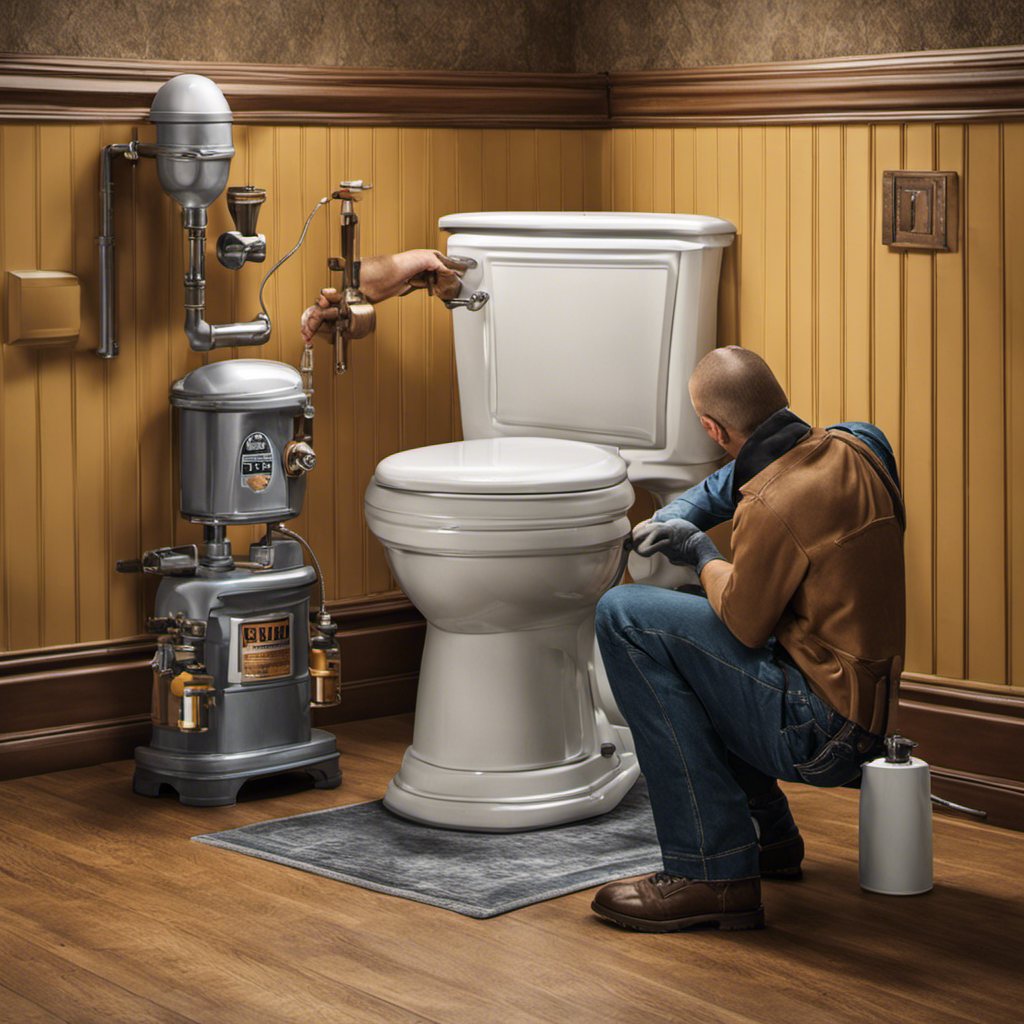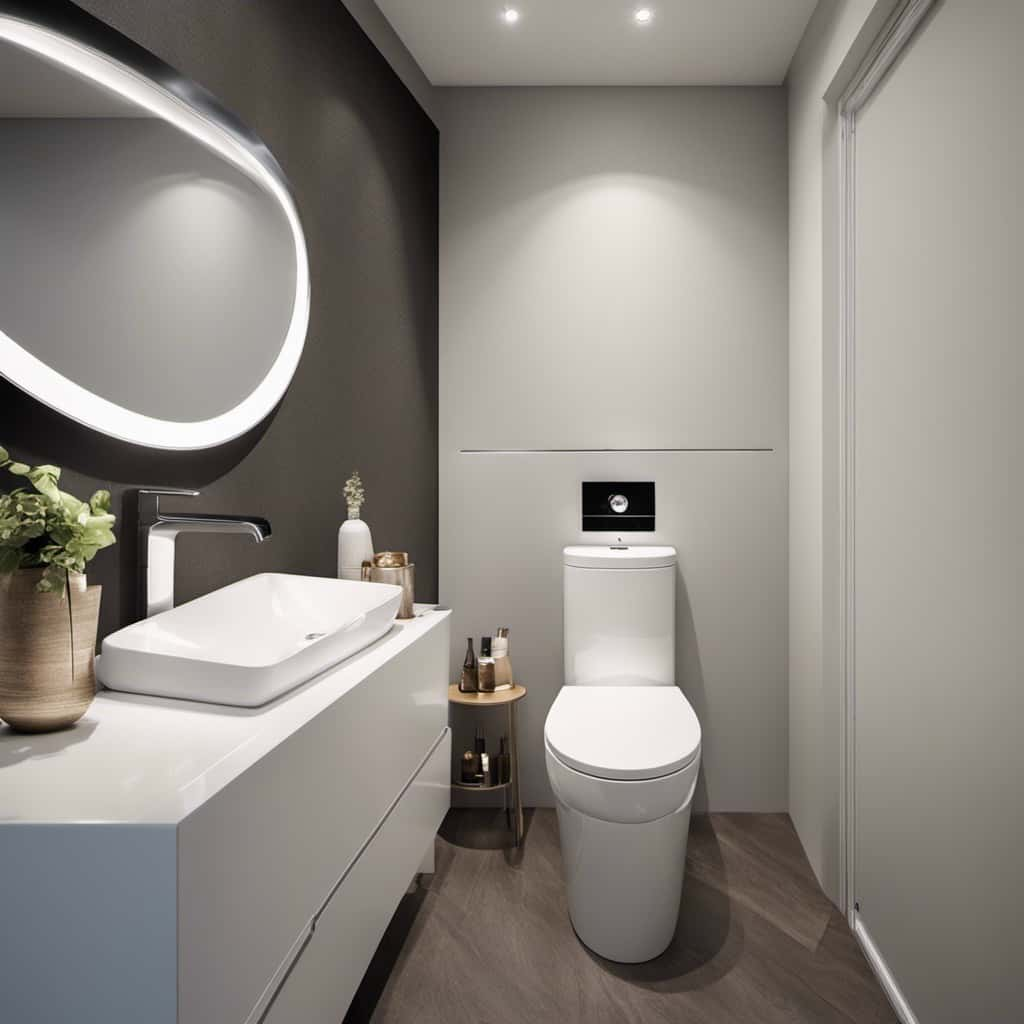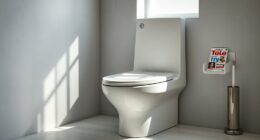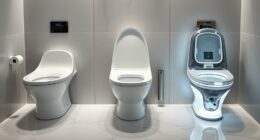Here’s a method to get a persistent toilet flushing.
First, let’s check the water level and make sure it’s not too low.
Then, we’ll ensure the flapper is working properly, as a faulty one can hinder flushing.
If that doesn’t do the trick, we’ll grab a plunger and give it a few firm pushes.

For more serious clogs, a toilet auger might be necessary.
And don’t forget, a toilet bowl cleaner could help keep things flowing smoothly.
If all else fails, it’s time to call in the professionals.
Key Takeaways
- Checking and maintaining the water level and flapper is essential for proper flushing.
- Using a plunger correctly and with the right amount of pressure can help unclog toilets.
- Alternative unclogging methods, such as hot water or DIY drain cleaners, can be effective.
- If all else fails, it is advisable to call in professional plumbers for assistance.
Check the Water Level
To check the water level, we recommend removing the toilet tank lid and observing the amount of water present. The water level in the tank plays a crucial role in the flushing mechanism.
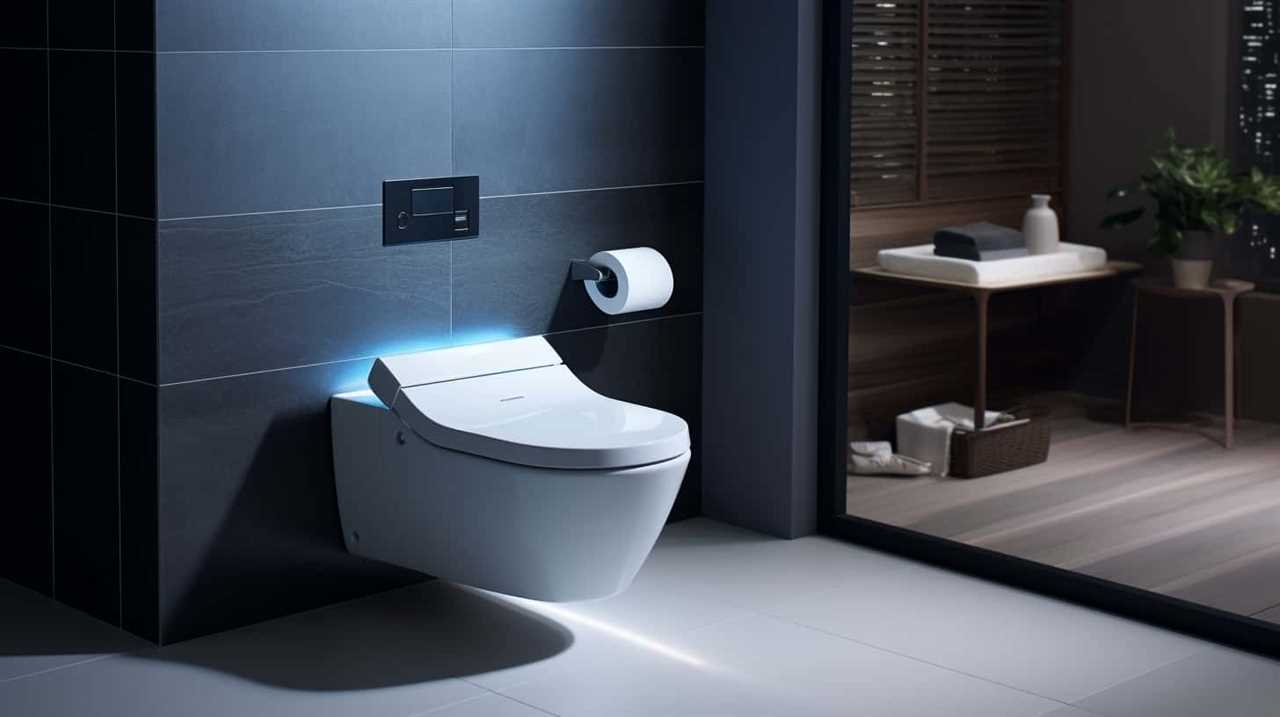
If the water level is too low, it may result in a weak flush or incomplete waste removal. Conversely, if the water level is too high, it can lead to water overflowing from the tank.
Adjusting the water level is essential to ensure proper flushing. To do this, locate the water level adjustment valve, typically found on the fill valve or flush valve assembly. By turning the valve clockwise or counterclockwise, you can increase or decrease the water level accordingly.
It’s crucial to maintain the appropriate water level to optimize flushing performance and prevent any issues with water pressure or flush handle maintenance.
Ensure the Flapper Is Working Properly
Now let’s take a closer look at the flapper and troubleshoot any issues that may be preventing it from working properly.

The flapper is a crucial component of the toilet’s flushing mechanism, responsible for sealing the flush valve and allowing water to flow into the bowl.
We’ll discuss common problems that can arise with the flapper and provide steps to troubleshoot them.
Additionally, we’ll explore alternative flushing mechanisms that can be used if the flapper is beyond repair.
Flapper Troubleshooting Steps
Checking the flapper’s functionality is crucial in ensuring that the toilet flushes properly. If the flapper isn’t working correctly, it can cause issues such as weak flushes or a constantly running toilet. To troubleshoot the flapper, there are a few steps you can take.

First, check for any visible signs of damage or wear on the flapper. If you notice any cracks or tears, it may be time for a flapper replacement.
Next, make sure the flapper is properly aligned and seated in the flush valve. If it’s not, adjust the flapper to ensure a proper seal.
Additionally, check the chain that connects the flapper to the flush lever. If it’s too loose or too tight, it can affect the flapper’s performance. Adjust the chain length accordingly.
Alternative Flushing Mechanisms
Once we’ve ensured that the flapper is working properly by following the troubleshooting steps mentioned earlier, we can now explore alternative flushing mechanisms.

One common alternative mechanism is the toilet flush handle. This handle is connected to a lever inside the toilet tank, which, when pressed down, lifts the flapper and allows water to flow into the toilet bowl, resulting in a flush.
Another option is the use of dual flush toilets. These toilets have two separate buttons or handles, one for a partial flush and one for a full flush. The partial flush is suitable for liquid waste, while the full flush is used for solid waste. This dual flush system helps conserve water by allowing users to choose the appropriate flush for different types of waste.
Now that we’ve discussed alternative flushing mechanisms, let’s move on to the next section and explore the use of a plunger.
Use a Plunger
Now let’s talk about using a plunger to force a toilet to flush.

When it comes to using a plunger, technique is key. The right amount of pressure and proper plunging motion can help dislodge the clog and get the toilet flushing again.
If using a plunger doesn’t do the trick, there are alternative unclogging methods that can be attempted.
Plunger Technique Explained
To unclog a stubborn toilet, we rely on the tried and true technique of using a plunger. The effectiveness of a plunger lies in its ability to create suction and pressure, which helps dislodge the clog and restore proper water flow.
There are several variations of plunger techniques that can be used depending on the severity of the clog. The most common technique involves placing the plunger over the drain opening and firmly pushing down, then pulling up quickly to create suction. This action should be repeated several times until the clog is cleared.

Alternatively, a more forceful technique called the ‘power plunge’ can be used by pushing and pulling the plunger with greater strength and speed. These techniques, when executed properly, can often resolve most toilet clogs.
However, if the plunger is ineffective, there are alternative unclogging methods that can be explored.
Alternative Unclogging Methods
If the plunger fails to unclog the toilet, we can explore alternative methods using the plunger. These methods can be effective in resolving the clog and preventing future toilet clogs. Here are some alternative unclogging methods that you can try:
- Use hot water: Pouring hot water into the toilet bowl can help break down the clog and allow it to flow through the pipes. Be careful not to use boiling water, as it may crack the porcelain.
- DIY drain cleaner: Mix baking soda and vinegar, and pour it into the toilet bowl. Let it sit for a few minutes, then flush with hot water. This mixture can help dissolve the clog and clear the pipes.
- Toilet snake: A toilet snake, also known as a closet auger, is a long flexible wire with a corkscrew tip. Insert it into the toilet drain and rotate it to break up the clog. This method is effective for stubborn clogs that the plunger couldn’t handle.
- Toilet clog prevention: To prevent future clogs, avoid flushing excessive toilet paper, feminine hygiene products, or foreign objects. Regular maintenance, such as using a plunger periodically, can also help prevent clogs.
If these alternative methods still don’t unclog the toilet, it’s time to try a toilet auger, which will be discussed in the next section.
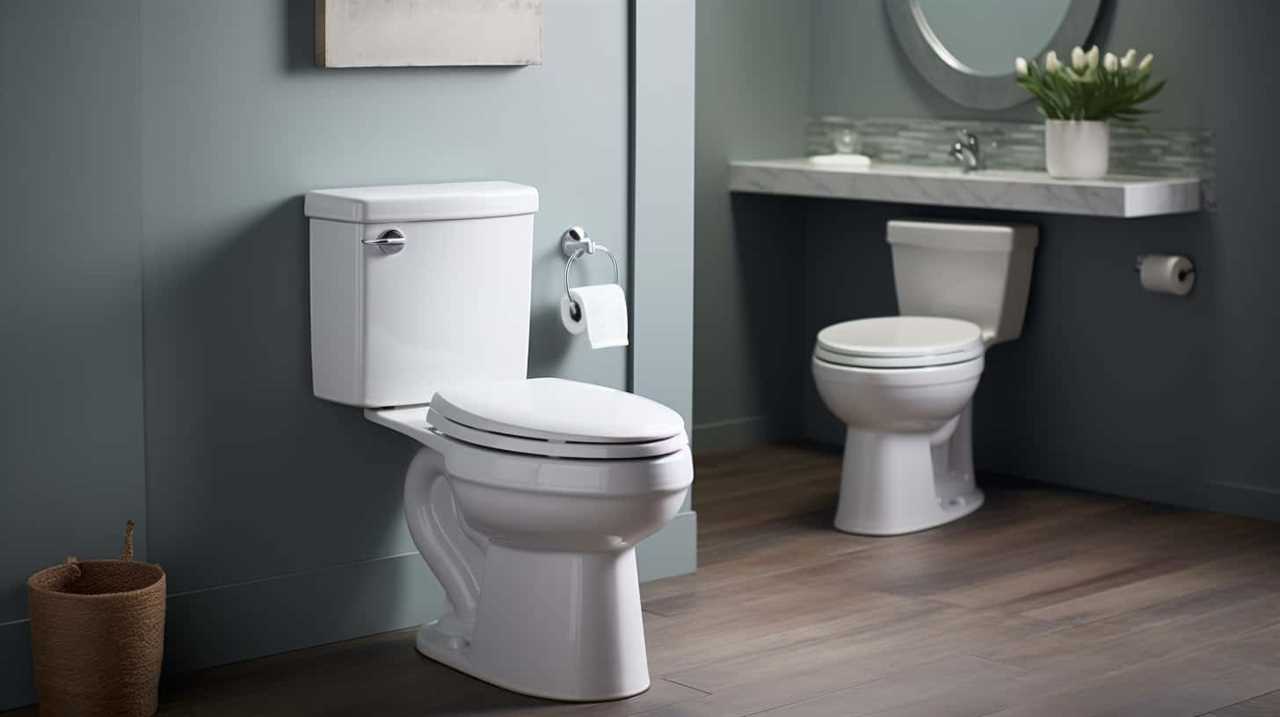
Try a Toilet Auger
We recommend using a toilet auger to effectively force a toilet to flush. A toilet auger is a tool specifically designed to unclog toilets by breaking up and removing blockages in the drain pipes.
To ensure the proper functioning of a toilet auger, regular maintenance is essential. It’s important to clean the auger after each use to prevent any debris from accumulating and causing further blockages. Additionally, inspecting the auger for any signs of wear and tear is necessary to ensure its optimal performance.
Troubleshooting flapper issues can also be resolved by using a toilet auger. Sometimes, a faulty flapper can prevent the toilet from flushing properly. By using the auger, you can effectively dislodge any debris or buildup that may be causing the flapper to malfunction, thereby restoring proper flushing function.
Consider Using a Toilet Bowl Cleaner
Using a toilet bowl cleaner can effectively remove stains and buildup, ensuring a properly functioning flush. When dealing with stubborn toilet bowl stains, it’s important to choose the right cleaning solution. Here are four options to consider:
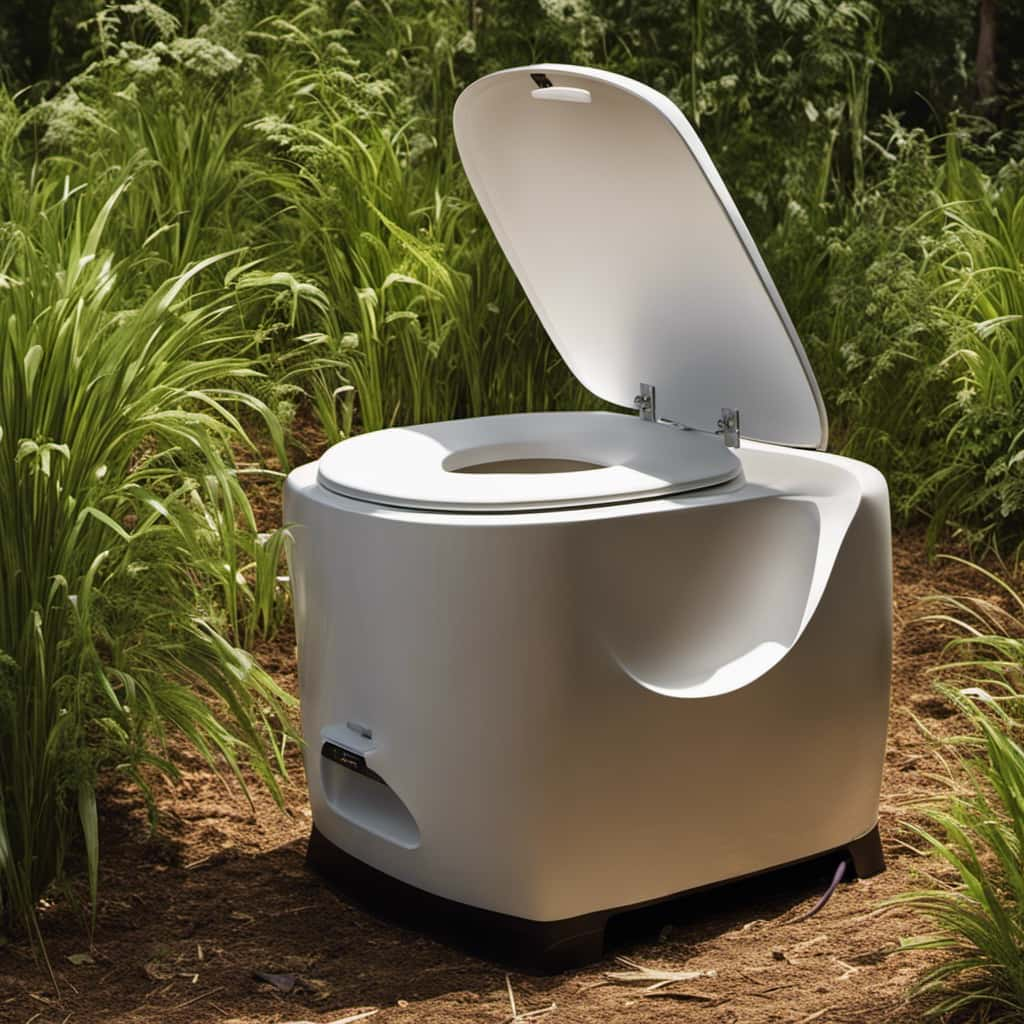
- Bleach-based cleaners: These cleaners contain bleach, which can bleach out tough stains and disinfect the toilet bowl.
- Acid-based cleaners: These cleaners are effective at removing mineral deposits and hard water stains.
- Natural cleaners: If you prefer eco-friendly options, there are natural cleaners available that use ingredients like vinegar or baking soda to tackle stains.
- Gel cleaners: Gel cleaners cling to the toilet bowl, providing extended contact time to dissolve stains and buildup.
Remember to follow the instructions on the cleaner’s packaging and take necessary safety precautions. If all else fails, it may be time to seek professional help.
Seek Professional Help if All Else Fails
When all else fails, it’s time to call in the professionals for a professional consultation. In certain situations, such as a persistent clog or a malfunctioning toilet, it is essential to seek the expertise of an emergency plumber. These skilled professionals have the knowledge and tools necessary to diagnose and resolve complex toilet flushing issues. They can accurately identify the underlying cause of the problem and provide effective solutions. Whether it’s a problem with the toilet’s internal mechanisms or a blockage in the plumbing system, an emergency plumber can efficiently address the issue. Don’t hesitate to seek their assistance when you’ve exhausted all other options. Table below illustrates the benefits of seeking professional help in such situations.
| Benefits of Seeking Professional Help |
|---|
| Expertise and Knowledge |
| Specialized Tools and Equipment |
| Efficient Problem Diagnosis |
| Effective Solutions |
| Peace of Mind |
Frequently Asked Questions
How Do I Check the Water Level in My Toilet?
To check the water level in your toilet, we need to troubleshoot the flapper. First, ensure the flapper is sealing properly. Then, adjust the water level by adjusting the fill valve.
What Are the Signs That Indicate a Faulty Flapper in a Toilet?
When troubleshooting toilet flushes, signs of a faulty flapper include water running continuously, weak flushes, or a toilet that won’t flush at all. These issues can be resolved by replacing the flapper.

What Are Some Tips for Using a Plunger Effectively to Force a Toilet to Flush?
When it comes to plunger techniques for forcing a toilet to flush, we’ve learned a thing or two. Avoid common mistakes like improper seal placement or weak plunging motions for optimal results.
How Does a Toilet Auger Work and How Can It Be Used to Unclog a Toilet?
A toilet auger is a useful tool for unclogging toilets. It works by rotating a flexible cable with a corkscrew-like tip, breaking up common toilet clogs. Its benefits include efficiency and effectiveness.
Are There Any Specific Precautions or Instructions to Keep in Mind When Using a Toilet Bowl Cleaner to Help Flush a Toilet?
When using a toilet bowl cleaner to aid in flushing a toilet, it is important to follow certain precautions and best practices. These include ensuring proper ventilation, using the cleaner as directed, and avoiding mixing different cleaning products.
Conclusion
In conclusion, when faced with a stubborn toilet that refuses to flush, there are several steps you can take to resolve the issue.
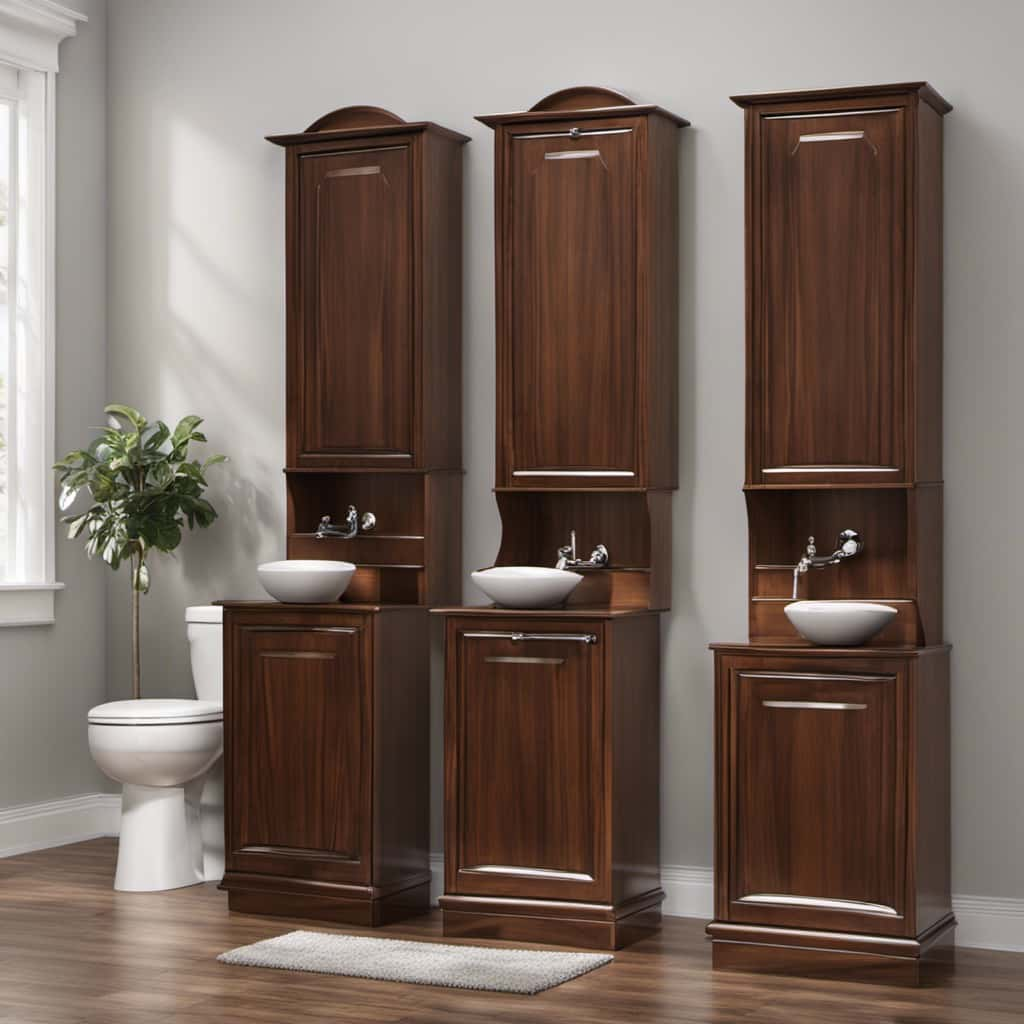
By checking the water level, ensuring the flapper is working properly, using a plunger or toilet auger, and considering the use of a toilet bowl cleaner, you can often fix the problem yourself.
However, if all else fails, don’t hesitate to seek professional help. Remember, a functional toilet is essential for a comfortable and hygienic environment.

